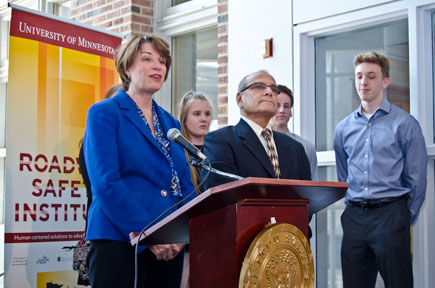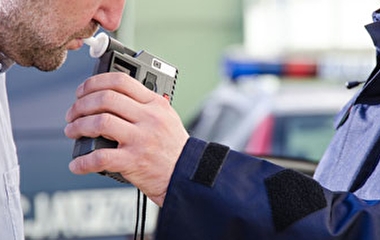distracted driving.
In early May, CTS and the Roadway Safety Institute hosted a visit by U.S. Senator Amy Klobuchar to highlight the dangers of distracted driving.
“As a mother of a 20-year-old driver, safety is always on my mind. But you don’t need to be a parent to appreciate the importance of keeping kids’—and really all drivers’—eyes on the road,” Klobuchar said. “We all know that 5 seconds—5 seconds—is the average time your eyes are off the road when you send a text, which means for a driver traveling 55 miles per hour, you actually are going the length of a football field blindfolded.”
Klobuchar went on to cite the sobering statistics of deaths and injuries due to driver distraction, but then got much more personal. “Despite all those numbers that are so startling and so big, no one [is] with me up here...because of the statistics. They’re here because of lost lives, because of their own family members, and because of those that they want to prevent from being injured or killed.”
Klobuchar was joined by Minnesota high school students, safety leaders, advocates, and representatives from the U of M, including Nichole Morris, principal researcher at the HumanFIRST Laboratory; Max Donath, director of the Roadway Safety Institute; and CTS director Laurie McGinnis.
Following remarks, the group toured the HumanFIRST Lab, which uses the tools and methods of psychology and human factors engineering to better understand driver performance. High school students from distraction-free driving clubs took turns behind the wheel of the lab’s immersive driving simulator, which is used for researching driver distraction and impairment.
“One of the ways that we take on [distracted driving] here in the HumanFIRST Laboratory is to impose some technology to the driving situation to improve teen driving,” Morris said.
Morris discussed some of her current research involving teen drivers. For example, the lab has developed a smartphone app that offers real-time feedback for teen drivers and automatically suppresses the teen’s ability to talk and text while driving.




